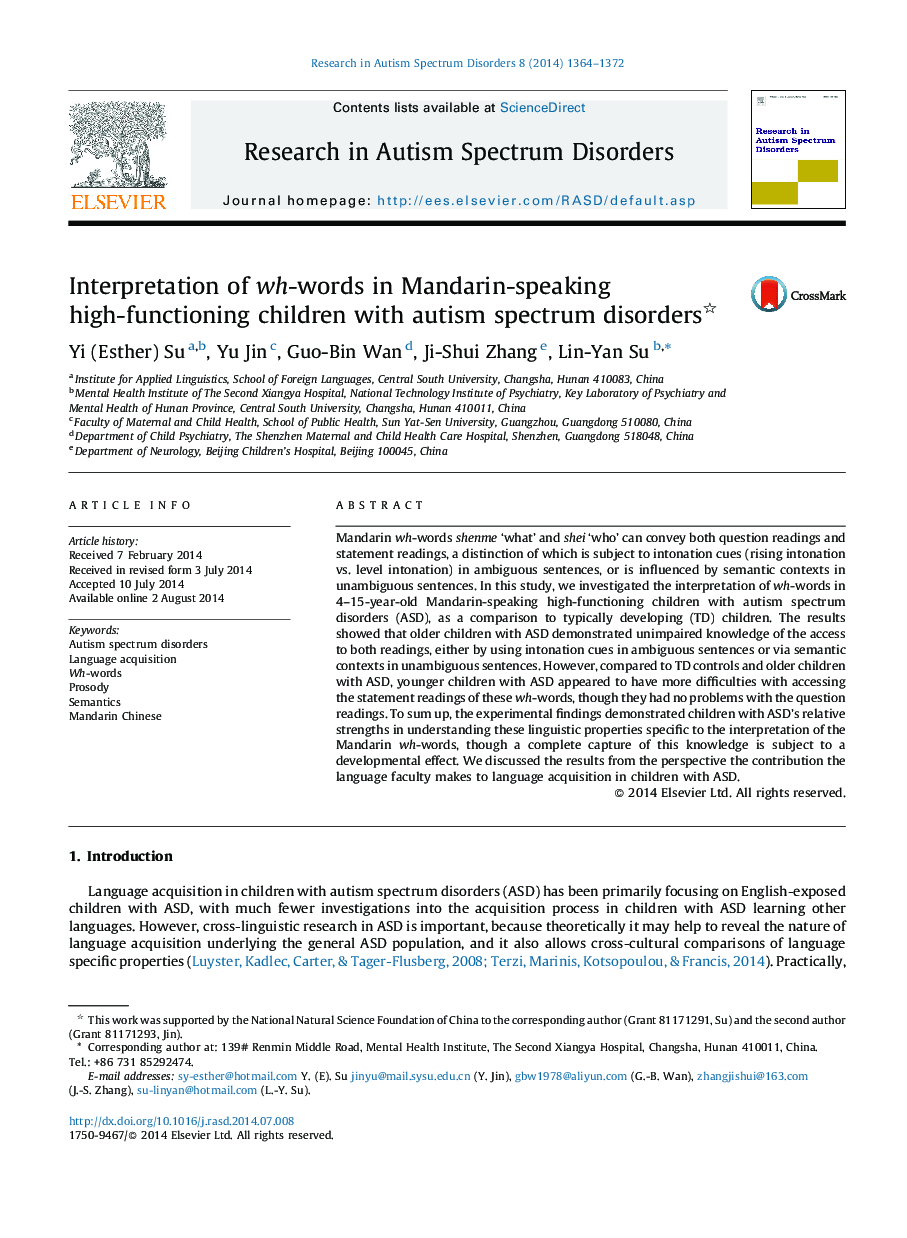| Article ID | Journal | Published Year | Pages | File Type |
|---|---|---|---|---|
| 370063 | Research in Autism Spectrum Disorders | 2014 | 9 Pages |
•Chinese children with ASD show relative strengths in interpreting the wh-words.•Interpreting wh-words via grammatical prosody is relatively spared in ASD.•Interpreting wh-words via semantic contexts is relatively spared in ASD.•The language faculty may contribute to knowledge of wh-words in children with ASD.•Cross-linguistic studies illuminate the general language acquisition process in ASD.
Mandarin wh-words shenme ‘what’ and shei ‘who’ can convey both question readings and statement readings, a distinction of which is subject to intonation cues (rising intonation vs. level intonation) in ambiguous sentences, or is influenced by semantic contexts in unambiguous sentences. In this study, we investigated the interpretation of wh-words in 4–15-year-old Mandarin-speaking high-functioning children with autism spectrum disorders (ASD), as a comparison to typically developing (TD) children. The results showed that older children with ASD demonstrated unimpaired knowledge of the access to both readings, either by using intonation cues in ambiguous sentences or via semantic contexts in unambiguous sentences. However, compared to TD controls and older children with ASD, younger children with ASD appeared to have more difficulties with accessing the statement readings of these wh-words, though they had no problems with the question readings. To sum up, the experimental findings demonstrated children with ASD's relative strengths in understanding these linguistic properties specific to the interpretation of the Mandarin wh-words, though a complete capture of this knowledge is subject to a developmental effect. We discussed the results from the perspective the contribution the language faculty makes to language acquisition in children with ASD.
